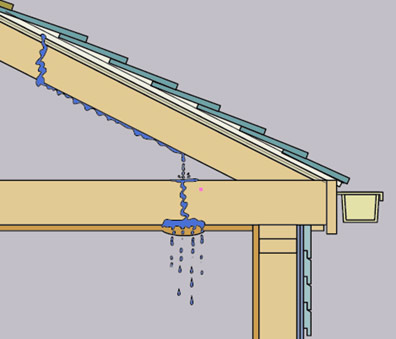Roof Waterproofing and Top 10 Common Types of Material Used For Waterproofing Roofs in Singapore
Introduction
Maintaining your home in Singapore requires you to consider roof waterproofing as a vital aspect. With the city’s tropical climate and frequent heavy rains, having a robust waterproofing system for your roof can save you from costly damage and inconvenience. This comprehensive guide will delve into roof waterproofing, exploring its importance and the top 10 materials used in Singapore.
Understanding Roof Waterproofing
Roof waterproofing, as the name suggests, makes your roof impervious to water penetration. Applying various materials and techniques prevents water from seeping into your home. Ensuring your interior remains dry and free from water leakage issues is crucial for construction and maintenance.
Why is Roof Waterproofing Necessary?
Roof waterproofing is essential for several reasons:
- Preventing Water Damage: Water leaks can lead to structural damage, including rotting wood and compromised foundations.
- Mould and Mildew Prevention: A wet environment encourages mould and mildew growth, harming your health.
- Energy Efficiency: A waterproofed roof can enhance insulation, reducing energy costs.
- Property Value: Proper waterproofing, indicating responsible maintenance, can increase the value of your property.
The Top 10 Roof Waterproofing Materials in Singapore
Now that we’ve covered the basics, let’s explore the top 10 common materials used for roof waterproofing in Singapore:
1. Asphalt Shingles
Asphalt shingles are a popular choice due to their affordability and ease of installation. They come in various colours and styles, allowing you to customise your roof’s look. These shingles are made of a fibreglass mat coated with asphalt and mineral granules, making them highly water-resistant.
2. Acrylic Roof Coating
Acrylic roof coatings are a popular choice due to their durability and flexibility. They can be applied to various roofing materials and offer excellent UV protection.
3. Polyurethane Roof Coating
Polyurethane coatings provide a seamless, waterproof barrier. They are known for their resistance to chemicals and extreme weather conditions.
4. Bitumen Membrane
Bitumen, also known as asphalt, is a traditional waterproofing material. People widely use Bitumen membranes in Singapore because of their cost-effectiveness and reliability.They are applied in layers and offer robust protection against water infiltration.
5. EPDM Rubber
EPDM, or Ethylene Propylene Diene Terpolymer, is a synthetic rubber roofing membrane. It’s known for its durability and ability to withstand extreme weather conditions. Installing EPDM is easy, and it provides excellent waterproofing properties.
6. TPO (Thermoplastic Olefin)
People are increasingly favoring TPO roofing because of its energy efficiency and environmental friendliness. It’s a single-ply membrane made from a combination of rubber and plastic. TPO roofs are resistant to UV radiation and are highly reflective, reducing energy consumption.
7. PVC (Polyvinyl Chloride)
Another single-ply membrane option is PVC roofing. It’s highly durable and chemical resistant, making it a great choice for industrial applications. PVC roofs are known for their long lifespan and excellent waterproofing capabilities.
8. Concrete Roof Tiles
Concrete roof tiles are durable and can withstand harsh weather conditions. Like clay tiles, their waterproofing capabilities depend on proper installation methods and the use of appropriate underlayment.
9. Clay Tiles
Clay tiles are a traditional roofing material with a distinct appearance. While they are not inherently waterproof, they can be combined with underlayment and proper installation techniques to create a waterproof roof.
10. Metal Roofing
Metal roofing, such as corrugated steel or aluminium, is known for its longevity and durability. When properly installed with the right underlayment, metal roofs can prevent water infiltration.
The Waterproofing Process
Now that we’ve explored the materials let’s briefly discuss the waterproofing process itself:
- Surface Preparation: The roof surface is cleaned and inspected for damage or weak spots.
- Primer Application: A primer enhances adhesion between the roof and the waterproofing material.
- Waterproofing Material Application: Applying the chosen waterproofing material follows manufacturer guidelines, which may involve multiple layers or coatings.
- Seam Sealing: Special attention is given to sealing seams and joints to prevent water penetration.
- Quality Control: We closely monitor the process to ensure a watertight seal.
- Final Inspection: A final inspection is conducted to confirm the effectiveness of the waterproofing.
Conclusion
Roof waterproofing is not just a practical necessity; it’s an investment in the longevity and comfort of your home. With the right materials and proper installation, you can ensure your roof remains a reliable barrier against Singapore’s rain and humidity.
Seek consultation with the premier roof leakage repair service provider in Singapore.
About NasaX Roofing Construction, Singapore
NasaX Roofing Construction stands as a reliable name in the roofing industry in Singapore, known for expertise and dedication. We have a track record of excellence and offer top-tier roofing solutions that combine quality craftsmanship and innovative techniques. Whether it’s roof repairs, re-roofing, or renovations, NasaX Roofing Construction ensures a strong, secure, and aesthetically pleasing roof over your head.







